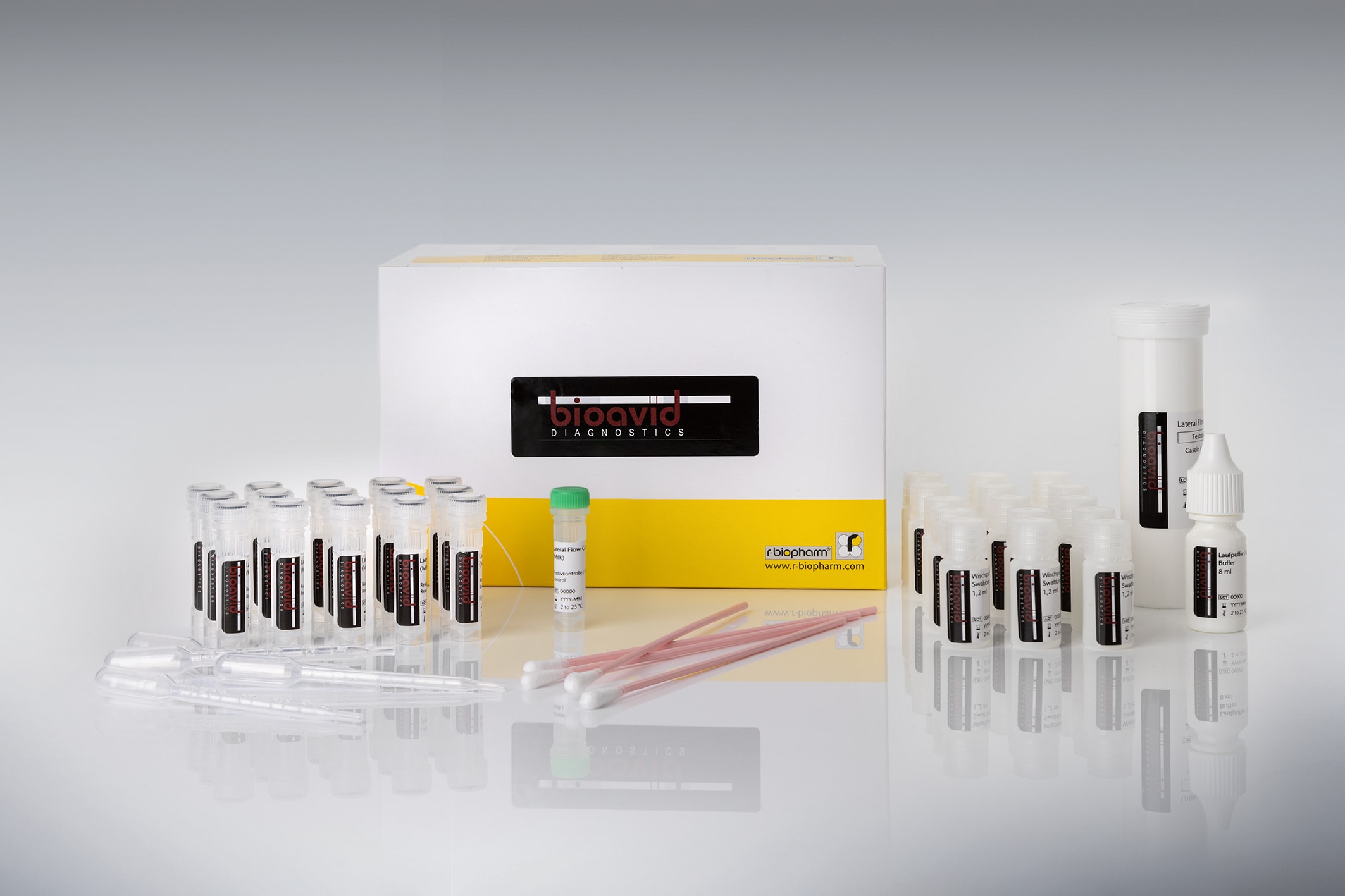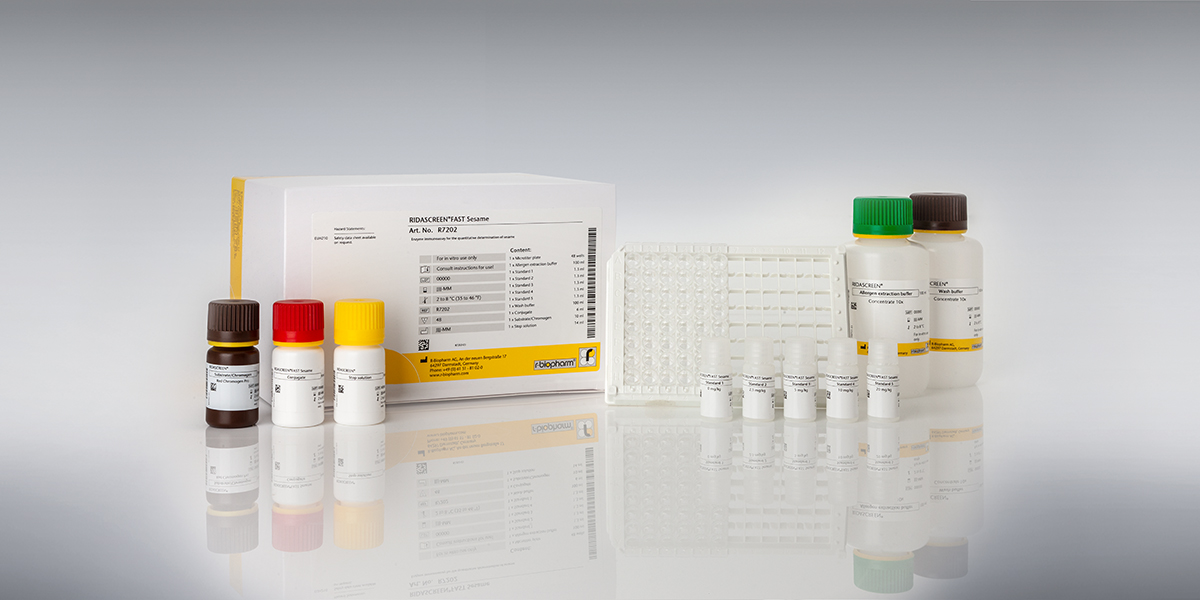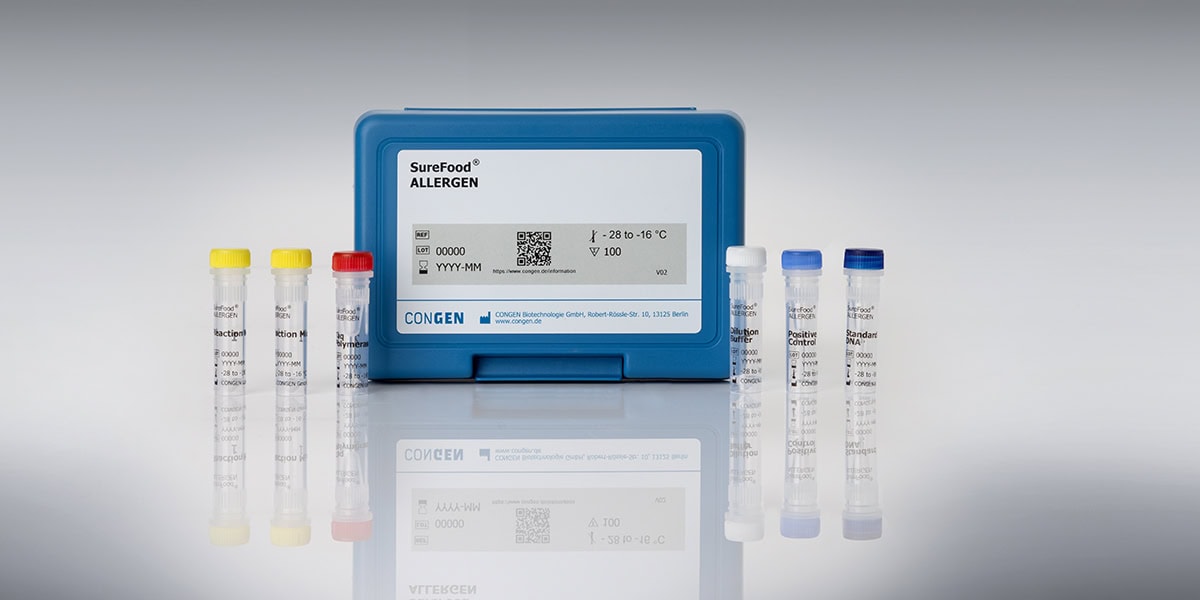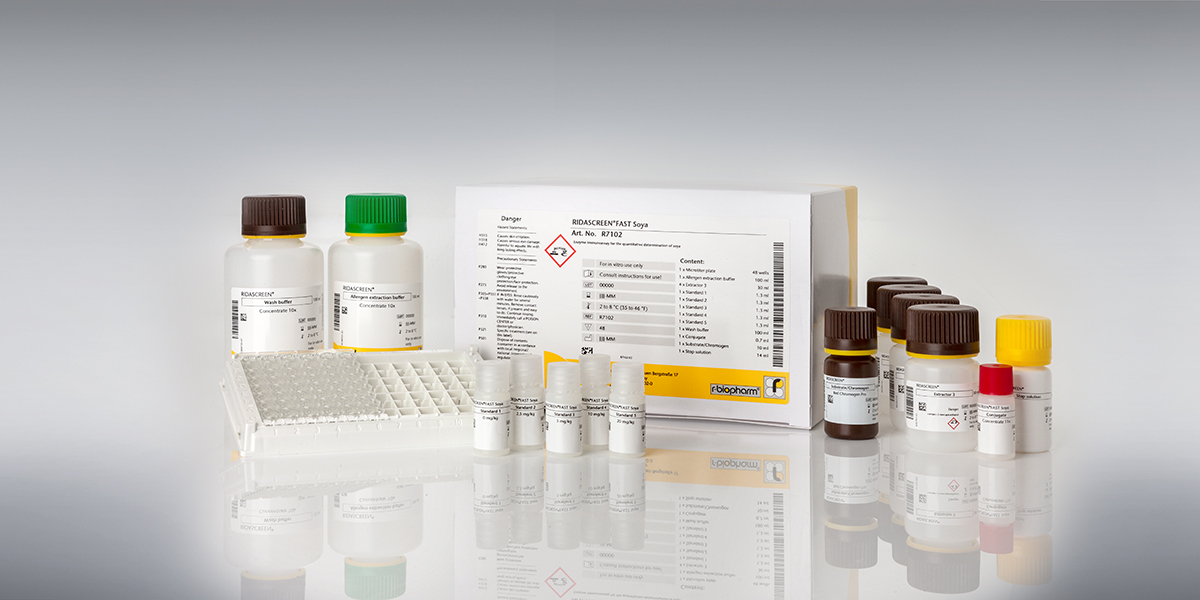
bioavid Lateral Flow Sesame incl. Hook line
Art. No. BLH709-15
Product info about bioavid Lateral Flow Sesame incl. Hook line
Intended use
The Lateral Flow Sesame (Art. No. BLH709-15), with included hook line from bioavid, is an immunochromatographic test for the sensitive and qualitative detection of sesame residues on surfaces (e.g. swab test for the hygiene control in food production lines), in cleaning / process water (CIP water) and food samples. The integrated hook line prevents false negative interpretation of high positive samples.
The test kits contain everything necessary for the analysis. Only for food sample preparation, additional materials (mixer and centrifuge/filters) are required.
General Information
Sesame seeds (Sesamum indicum) are used as raw or roasted ingredients in many different foods. Sesame seed food allergy is an increasingly recognized health burden. The concentration of proteins in sesame seed is very high (16 – 32 %). So far, seven different proteins of sesame were identified as allergens (Ses i 1-7). The allergen can be present as an ingredient or as a contamination in raw and cooked products. Until now, there is no cure for food allergies. The only effective treatment is a diet with strict avoidance of foods containing sesame. Therefore, it is even more important to avoid cross contamination, which can lead to accidental consumption by allergic patients. According to the regulation (EU) No. 1169/2011 , sesam and products thereof must be declared on food labels. Similar regulations exist e.g. in the USA, Canada and Australia.
To avoid allergic reactions, the safety of foods is ensured by the labeling of allergenic ingredients. Nevertheless, a high risk is still an unintended presence of allergens by cross-contamination due to the food process. It is therefore important to avoid and detect cross-contamination (e.g. due to residues on production lines). The bioavid rapid tests can be used for various applications to detect cross-contamination. For example, incoming raw materials or the effectiveness of the cleaning of production facilities can be checked.
An important challenge with the safe and fast LFD analysis are false negative results due to very high allergen concentrations in the test sample. The so-called “high dose hook effect” (or “overload effect”; Standard EN 15633-1. 2019) is observed when a very high amount of an analyte is present in the sample. In this case, the development of the test line can be inhibited and there is a risk that the test result will be falsely evaluated as negative (or analyte undetectable). The hook line on the test strip makes this effect visible. A missing hook line indicates a high allergen content in the sample and can no longer be evaluated as negative. The evaluation card for the bioavid test strips with hook line can be downloaded here.
The bioavid dip sticks are an easy-to-use method and enable a quick and reliable analysis. The application is very simple and can also be carried out by personnel without laboratory education. The processing of all bioavid parameters is identical and can be downloaded here as a flyer. All test kits can be stored at room temperature and are therefore an ideal tool for direct testing in the field, in production facilities or for rapid food testing.
Strongly colored (e.g. coffee, tea, spices, wine), polyphenol / tannin containing, oily or acidic / alkaline samples (e.g. juices) should be extracted with the Absorbent Buffer (Art. No. BS810-15). The buffer decolorizes or neutralizes solutions to avoid false positive results and minimize matrix effects.
For the analysis of non-validated samples, the document « SOP Verification Solid Sample Test » (standard operating procedure) can be used. We also offer a paid service for the verification of non-validated matrices.
Benefits:
• Better safe than sorry: Included hook line for safe identification of high positive samples
• Uniform procedure for all bioavid parameter
• Easy documentation with RIDA®SMART APP Allergen (more information)
• Versatile: applicable for surface-testing, CIP water and food samples (raw and processed)
Accessories
Dear customers,
we provide the documents for our products in an electronic format which include the Instructions for Use (IFU), the Safety Data Sheets (SDS) and the Certificate of Analysis (CoA). For batches placed on the market after 01. January 2024, you can find our documents on the eIFU portal eifu.r-biopharm.com/food.
| Specifications | |
|---|---|
| Art. No | BLH709-15 |
| Test format | 15 test strips (15 determinations) |
| Sample preparation | • Surfaces (swabbing): moisten swab in PBS-containing tube, wipe surface and rinse swab in the same tube • Cleaning water (e.g. CIP water): no preparation needed |
| Incubation time | 5 min Roomtemperature 2 - 25 °C (35 - 77 °F) |
| LOD (Detection Limit) | (CIP) water: 0.2 µg/mL (ppm) white/black sesame Surfaces (swab samples): 0.02 µg/cm2 |
| Cross Reactivity. | Almond: 0.001 % |
| Detected analyte | Sesame residues |
| Evaluation | Visual evaluation |




